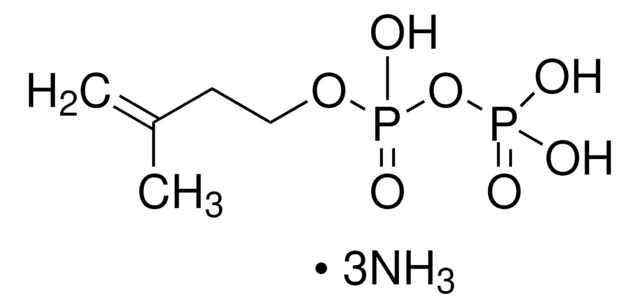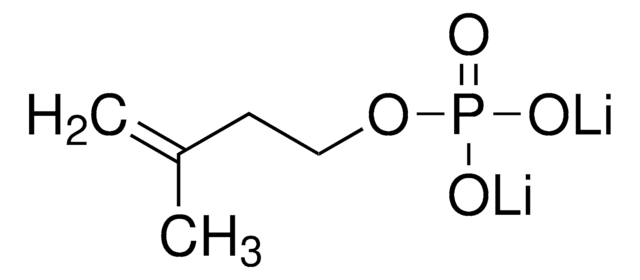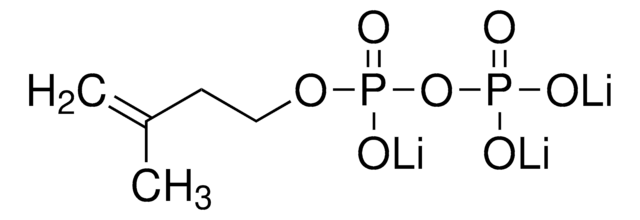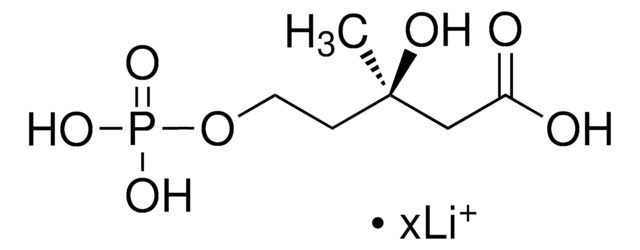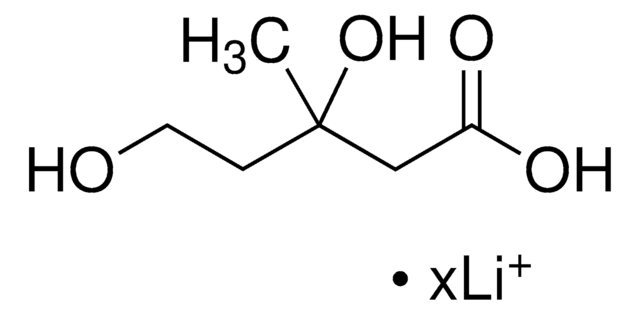00297
Isopentenyl pyrophosphate trilithium salt
≥95.0% (TLC)
Sinónimos:
3-Methyl-3-butenyl pyrophosphate trilithium salt, IPP
About This Item
Productos recomendados
grado
for analytical purposes
Ensayo
≥95.0% (TLC)
Formulario
powder
impurezas
≤10% water
temp. de almacenamiento
−20°C
cadena SMILES
[Li+].[Li+].[Li+].CC(=C)CCOP([O-])(=O)OP([O-])([O-])=O
[Li+].[Li+].[Li+].CC(=C)CCOP([O-])(=O)OP([O-])([O-])=O
InChI
1S/C5H12O7P2.3Li/c1-5(2)3-4-11-14(9,10)12-13(6,7)8;;;/h1,3-4H2,2H3,(H,9,10)(H2,6,7,8);;;/q;3*+1/p-3
Clave InChI
ZJGSIAARCDPUSN-UHFFFAOYSA-K
¿Está buscando productos similares? Visita Guía de comparación de productos
Descripción general
Aplicación
Acciones bioquímicas o fisiológicas
Envase
Palabra de señalización
Warning
Frases de peligro
Consejos de prudencia
Clasificaciones de peligro
Acute Tox. 4 Oral - Eye Irrit. 2 - Skin Irrit. 2 - STOT SE 3
Órganos de actuación
Respiratory system
Código de clase de almacenamiento
11 - Combustible Solids
Clase de riesgo para el agua (WGK)
WGK 3
Punto de inflamabilidad (°F)
Not applicable
Punto de inflamabilidad (°C)
Not applicable
Elija entre una de las versiones más recientes:
Certificados de análisis (COA)
¿No ve la versión correcta?
Si necesita una versión concreta, puede buscar un certificado específico por el número de lote.
¿Ya tiene este producto?
Encuentre la documentación para los productos que ha comprado recientemente en la Biblioteca de documentos.
Los clientes también vieron
Nuestro equipo de científicos tiene experiencia en todas las áreas de investigación: Ciencias de la vida, Ciencia de los materiales, Síntesis química, Cromatografía, Analítica y muchas otras.
Póngase en contacto con el Servicio técnico